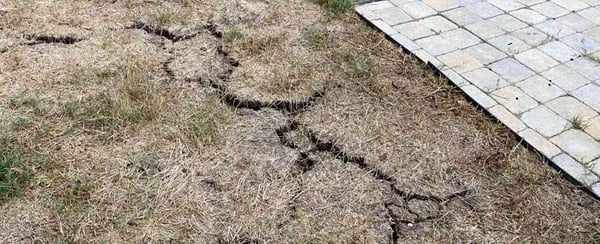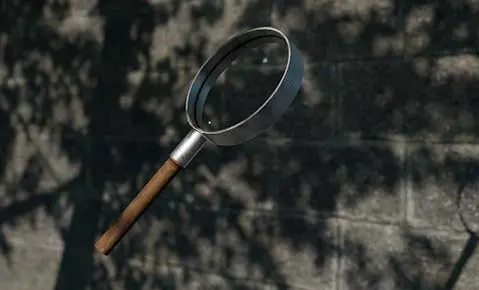Is your foundation settling, sinking, or capsizing full-titanic into incompetent, non-load-bearing soil? Not sure why? If you want to learn how expansive soil is the root of foundation settlement and unlevel homes, this article is for you.
Dalinghaus Construction Inc. has repaired thousands of foundations across Southern California and Arizona, from steel pier underpinning to polyurethane deep injection. Foundation education is always step numero uno when it comes to homeowners making well-informed decisions.
This article covers the definition of expansive soil, how it results in foundation settlement, and the best ways to address foundation settlement. By the end of this article, you will know the primary signs and symptoms of settlement caused by expansive soil.

What is Expansive Soil?
So, what the heck is expansive soil? Expansive soil is clay, silt, loam, or any soil that is particularly prone to expansion or shrinkage in direct variation with the water table. In short, expansive soils swell when water is present and shrink as the water evaporates.
Expansive soils follow a seasonal and cyclical pattern, expanding in the winter months and drying out in the summer. Expansive soils are made up of minerals (incredibly fine particles) with little to no organic material and are therefore difficult to drain.
Currently, California and Arizona are experiencing one of the worst droughts in recorded history, which translates into an incredible amount of settlement as the baseline water level continues to sink lower and lower. This is part of the reason we’ve so much settlement over the last few years instead of heaving.
List of Expansive Soils:
- Smectite
- Bentonite
- Montmorillonite
- Beidellite
- Vermiculite
- Attapulgite
- Nontronite
- Chlorite
Expansive soils are found in every state but are especially prevalent in California, Nevada, Arizona, Colorado, and other southwest states.
How Does Expansive Soil Cause Foundation Settlement?
Expansive soil is weak, incompetent, non-load-bearing soil that has difficulty sustaining the heavy load of a home above grade (the ground), causing the home to sink into the earth. If only soil could hit the gym, we’d be in luck, but the soil can’t strengthen or densify itself.
Homes rarely settle uniformly. Typically, homes sink with one section settling at a significantly faster and steeper rate than the rest of the home.
In addition to the non-uniform settlement, expansive soil’s recurrent expansion and shrinkage exert a tremendous amount of force on foundations – as much as 5,000 pounds of pressure per square foot. This pressure is often transferred up and into the interior framing of the home, warping doorframes and causing doors to stick.
Imagine taking a crisp, new playing card and bending it back and forth repeatedly.
Obviously, this weakens the initial integrity of the card. Expansive soil’s consistent swelling and shrinking have the same effect on the structural integrity of your foundation, bringing a long list of nasty signs and symptoms.
Signs and Symptoms of Foundation Settlement Caused by Expansive Soil:
- Sloping/bowed floors
- Sticking doors and windows
- Cracked drywall, stucco, or footings
- Leaning and cracked chimneys
- Cabinets pulling away from the wall
For a more in-depth and visual-friendly guide to the signs and symptoms of foundation settlement, read our article 5 Signs and Symptoms of Foundation Issues (Foundation Settlement & Foundation Heave).
Expansive soil causes up to 2.3 billion dollars in damages across the nation every year – destroying pipelines, roads, houses, and other structures. In short, expansive soil can make your home a miserable place to live and significantly decrease your property value.
Best Ways to Address Foundation Settlement Caused by Expansive Soil
The good news is that there are long-term solutions to combat foundation settlement caused by expansive soil. You don’t have to live with those steep fun-house floors or nasty drywall cracks that give off Stephen King vibes.
Common forms of addressing foundation settlement include:
- Mudjacking – pumping slurry beneath your foundation
- Underpinning – utilizing steel or concrete piers to support your foundation
- Polyurethane Injection – use polyurethane foam to support and/or fill voids beneath your foundation
- A push pier / helical pier/ and polyurethane combination
Steel pier underpinning is the current industry favorite in combating foundation settlement.
Steel pier underpinning utilizes push piers and/or helical piers – steel pipes that are hydraulically driven into competent, load-bearing soil and anchored to a foundation’s footing via a remedial bracket to secure, stabilize, and/or lift the structure.
Check out our case study Repairing A Raised Foundation With Helical Piers In Ojai, CA
Steel pier underpinning is fantastic because it circumvents the weak soil, piercing right through it to lodge into bedrock.
In laymen’s speak, push pier and helical pier systems are like underground stilt-support systems and often allow for the home to be lifted to maximum practical recovery.
Dalinghaus Construction Inc. offers a lifetime warranty on all our steel pier systems – push pier, helical pier, and helical tieback. And, no, the warranty doesn’t cover just your lifetime, but the lifetime of the structure. It’s transferable upon inheritance or purchase of the home.
To learn more about our lifetime warranty, check out our article Dalinghaus Steel System Lifetime Warranty.
Will Steel Pier Underpinning Work on Your Home?
In this article, you learned that expansive soil is a broad term encompassing clays, silts, loams, or any type of soil that significantly expands and shrinks in direct correlation with the water level. You also learned signs and symptoms and that underpinning is the most common form of repairing foundation settlement.
Dalinghaus Construction Inc. has been in the foundation game since 2015 and holds over 100 years of combined foundation repair experience. We’ve utilized steel pier underpinning to help hundreds of homeowners reclaim their homes.
To learn more about steel pier underpinning and its average cost, be sure to read our article Underpinning Cost – Steel Pier Systems.
If you believe your home is suffering from foundation settlement and you reside in Southern California or Arizona, click on the link below to book a free foundation inspection –






